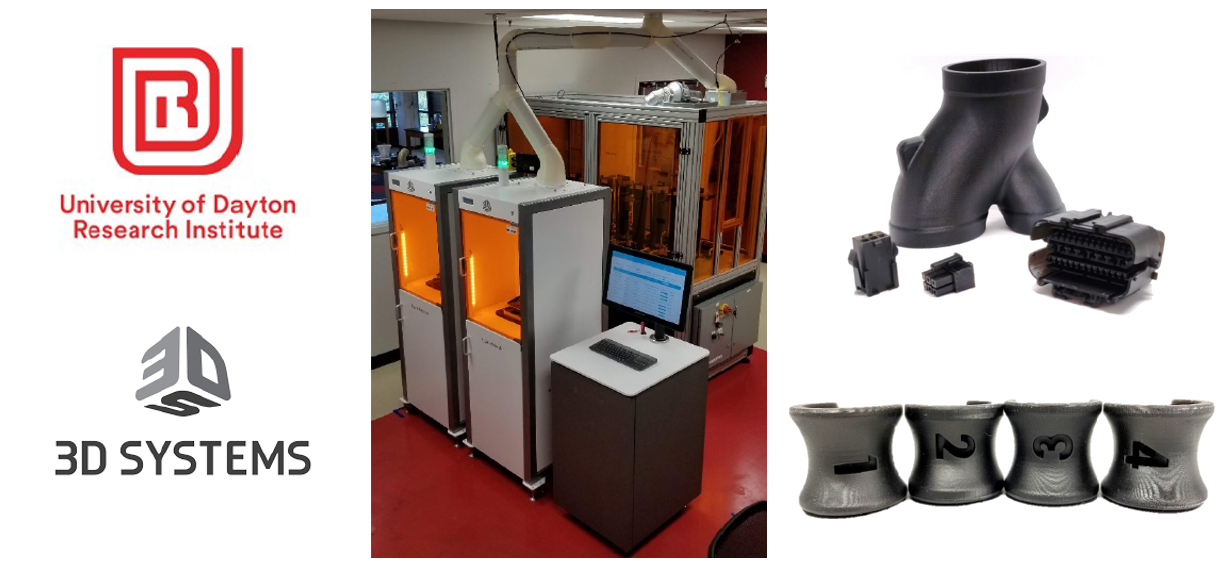


A cluster of 3D Systems Figure 4 Printers at University of Dayton Research Center produced parts out of the FR-307 material. Parts produced with the DLP material shown on right.
Problem
Low criticality, polymer cockpit components such as knobs and buttons are known to pose acquisition challenges for legacy aviation fleet maintenance and operations, especially for DoD applications. Digital Light Processing (DLP) was an alternate manufacturing technology that offered a substantial potential for lead-time reduction. DLP is known to deliver the productivity, design, and geometric tolerancing necessary for manufacturing these components. DLP material flame-smoke-toxicity (FST) performance (per FAR 25.853) required further development and verification. Identification and FST testing of suitable DLP materials were necessary to address material and process qualification requirements and accelerate component entry to service.
Objective
The objective of this project was to mature the 3D Systems Figure 4 DLP technology as a qualified alternate source of supply for the manufacture of low-criticality, polymer cockpit components. Candidate DLP material flame-smoke-toxicity (FST) performance was verified to address material and process qualification requirements.
Technical Approach
3D Systems and the University of Dayton Research Institute (UDRI) executed a test program to verify existing and novel materials using Figure 4 DLP to quantify FST characteristics. A survey of sustainment-relevant cockpit components and applications drove the prioritization of candidate materials for testing. Testing included material UV stability, vertical burn, fluid compatibility, and heat deflection. The team delivered a review of standards and regulations for FST testing and performance requirements for these cockpit applications. UDRI-documented material selection and design guidance information will ultimately facilitate future development efforts for these types of aviation applications.
Accomplishments
A series of candidate materials were identified in collaboration with the America Makes membership including aviation regulatory authorities to address FAR 25.853 FST requirements for low-criticality, cockpit components. Materials were subjected to qualifying tests where the pedigreed data can be leveraged by the broader aviation community to facilitate expansive use for future aerospace sustainment and design. The material passed the 12-second burn test which satisfies Flame Smoke Toxicity requirements for parts consistent with the build volume of the 3DSystems Figure 4. This alternative source of supply for hard-to-source in-cockpit items can take days as opposed to months or years for hard-to-source items. The 3DSystems Figure 4 also addresses supply chain shortages closer to the point of need with qualifiable material. Overall, the project resulted in a “first” due to the successful demonstration of a DLP material that meets the FST requirements with acceptable mechanical performance. The DLP Figure 4 with the FR-307 Material is now a qualified process and material for these applications and efforts show key insights for how these solutions can be scaled to larger build volume DLP systems.
Project Participants
Project Principal

Other Project Participants
- 3D Systems
Public Participants
- U.S. Department of Defense
